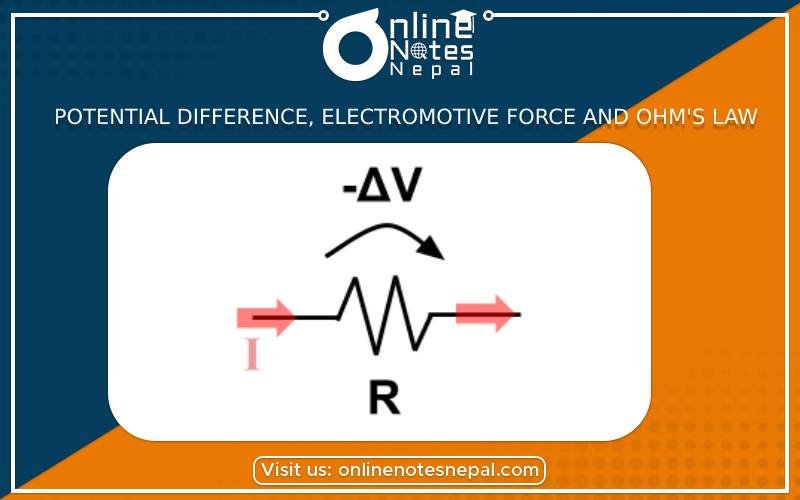Published by: Nuru
Published date: 13 Jan 2022

A positively charged body is said to be at positive potential or higher potential. A negatively charged body is said to be at negative potential or lower potential.
Potential difference is defined as the amount of work done in moving a unit positive charge from one point to another in an electrical circuit. The unit of p.d (V) is JC-1 which is called volt.
Potential difference (V) = IR
Electromotive force (e.m.f.)
The e.m.f. of an electric source is the rate at which energy in a non-electrical form is converted into an electrical form during the passage of unit positive charge through it.
Voltmeter:
Voltmeter is an electrical device which measures potential difference between any two points in an electric circuit.
Difference between emf and pd
| e.m.f | p.d. |
| It is a measure of the energy supplied by a source to carry a unit charge through a circuit. | It is a measure of the work done while taking a unit charge from one point to other through a circuit. |
| It is a cause of p.d. | It is an effect of e.m.f. |
| It is measured in an open circuit. | It is measured in a closed circuit. |
| It is greater than p.d. | It is less than e.m.f. |
Ohm’s law
The electric current passing through a conductor is directly proportional to the potential difference across its two ends at a constant physical condition. (Temperature, cross-sectional area, length, shape, nature of material etc.)
If ‘I’ is the electric current through a wire and ‘V’ is the p.d. across its ends.
I α V
V α I
V= IR………… (i) where R= electrical resistance of the conductor, which is used as constant.
From equation (i), we have
R = V / I
R is an electrical resistance of the conductor, which is considered as constant.
Here, I = Electric current
V = Potential difference
R = Resistance
According to the above relationship, resistance is the ratio of the potential difference across its two ends to the electric current flowing through it.
Experimental verification of Ohm's law is described below:
The experimental set up for the verification of the Ohm's law is shown in the figure. The given figure consists of a voltmeter (V) which is connected across a nichrome wire BC. The wire BC is connected with an ammeter (A), a key K and cells. The ammeter measure the current (I) through the circuit whereas the voltmeter measure the p.d. (V) across the wire PQ.
At first use a single cell. When the key K is closed, electric current flows in the circuit. Record the readings of the ammeter and the voltmeter. Repeat the experiment by using two cells and joining M and O. Now, join M and R and record the readings of ammeter and voltmeter. When we plott a graph between p.d (V) and current (I) and get a straight line through the origin as shown in the figure, this shows that the current indirectly proportional to the p.d. which verifies Ohm's law.